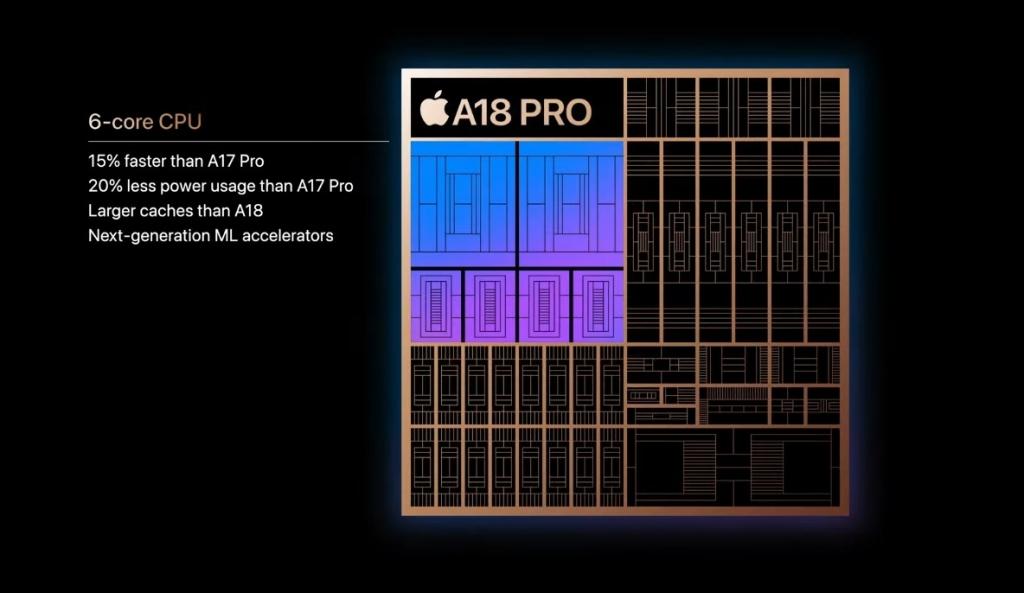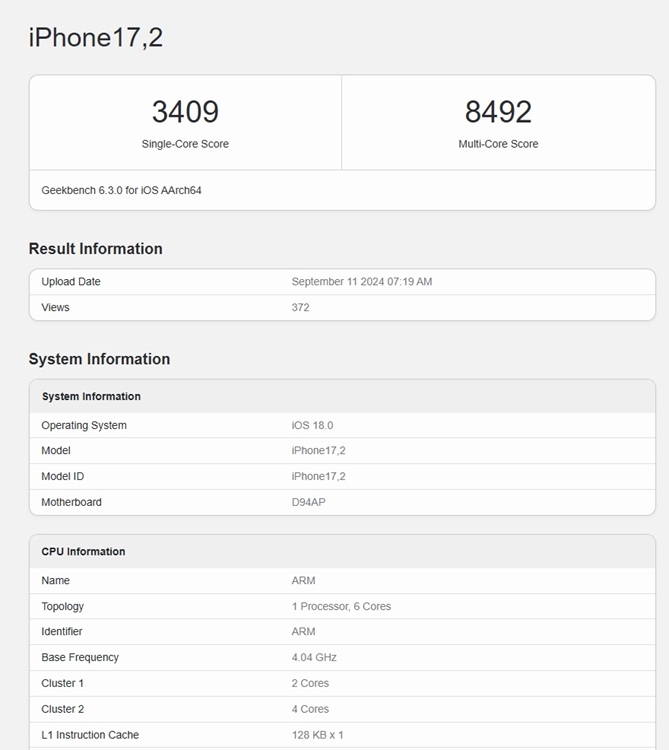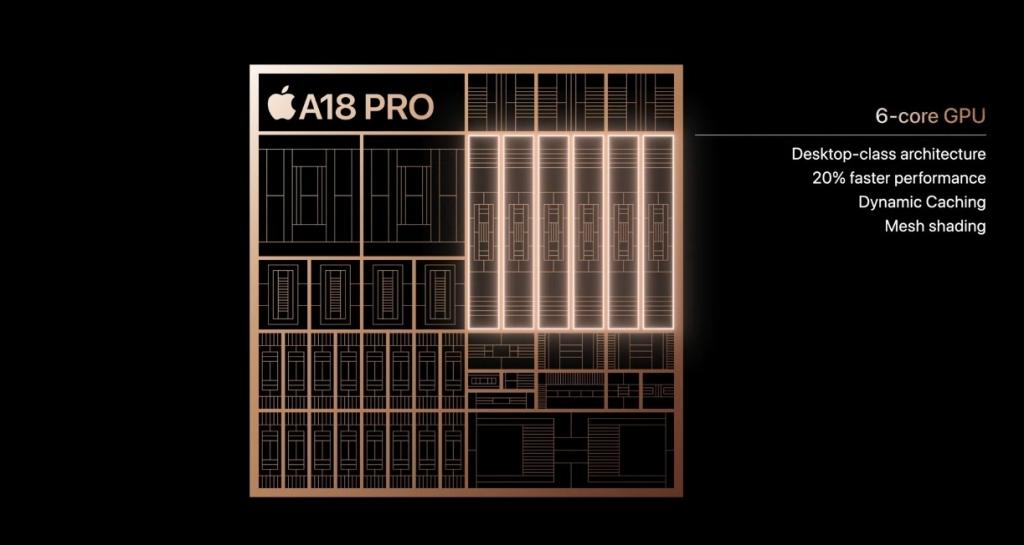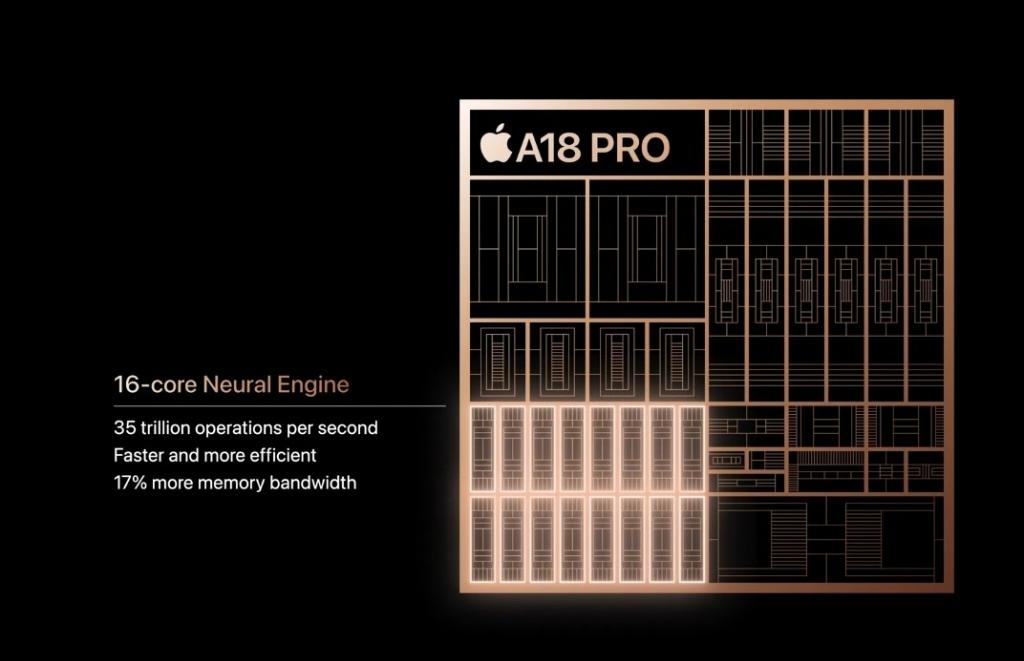Apple has launched its flagship iPhone 16 Pro series with the new A18 Pro chipset. The Apple A18 Pro touts huge improvements in CPU performance and efficiency, and it delivers powerful graphics and AI performance on top. On the Android side of things, Qualcomm’s Snapdragon 8 Gen 3 is still the leading chipset so we have come up with a detailed comparison between the Apple A18 Pro and Snapdragon 8 Gen 3.
A18 Pro vs Snapdragon 8 Gen 3: Specs Comparison
| Apple A18 Pro | Snapdragon 8 Gen 3 | |
|---|---|---|
| CPU | Six-core CPU (2+4) | Octa-core, Kryo CPU (1+3+2+2) |
| CPU Cores | 2x 4.04GHz Performance cores 4x Efficiency cores | 1x 3.3GHz (Cortex-X4) 3x 3.2GHz (Cortex-A720) 2x 3.0GHz (Cortex-A720) 2x 2.3GHz (Cortex-A520) |
| Process Technology | TSMC’s 3nm process (N3E) | TSMC’s 4nm process (N4P) |
| GPU | Apple 6-core GPU Hardware-accelerated Ray Tracing | Adreno GPU 750 HW Ray Tracing, AFME 2.0 Unreal Engine 5 Lumen |
| Memory Support | LPDDR5X, up to 7500 MT/s | LPDDR5X, up to 4.8GHz |
| Machine Learning and AI | 16-core Neural Engine; 35 TOPS | New Hexagon AI Engine Run AI models up to 10B parameters |
| Modem | Snapdragon X75 5G modem (likely) Up to 10 Gbps Peak Download Up to 3.5 Gbps Peak Upload | Snapdragon X75 5G modem Up to 10 Gbps Peak Download Up to 3.5 Gbps Peak Upload |
| Connectivity | Wi-Fi 7, Bluetooth 5.3 | Wi-Fi 7, Bluetooth 5.4, LE |
A18 Pro vs Snapdragon 8 Gen 3: CPU
First off, the A18 Pro is manufactured on TSMC’s much-improved N3E process node (3nm). And just like last year, the CPU has six cores with 2x performance cores and 4x efficiency cores. Two performance cores run at a mighty 4.04GHz frequency.
Apple has also adopted the Armv9.2a architecture for the A18 Pro with support for SME/SME2 (Scalable Matrix Extension). The new SME units aka ML accelerators significantly improve the performance in AI and ML applications. That said, there is no support for SVE (Scalable Vector Extension).

Geekbench 6.3recently added SME support, and that’s the reason the A18 Pro scores better on the Geekbench CPU benchmark compared to other mobile chipsets that lack SME. The A18 Pro in Geekbench 6.3 has achieved 3,409 and 8,492 points in single-core and multi-core tests, respectively.

As for the year-old Snapdragon 8 Gen 3, it packs eight CPU cores and it’s built on TSMC’s 4nm process node(N4P). Its single prime core, the Cortex-X4 can only clock up to 3.3GHz. In our Snapdragon 8 Gen 3 benchmark testing, we have seen it achieving 2,200 and 6,985 in Geekbench single-core and multi-core tests, respectively.
| Geekbench 6.3.0 | A18 Pro | Snapdragon 8 Gen 3 |
|---|---|---|
| Single-core | 3,409 | 2,200 |
| Multi-core | 8,492 | 6,985 |
Simply put, the six-core CPU on the A18 Pro is nearly 54% faster than the Snapdragon 8 Gen 3 in single-core tasks, which is huge. And 21% faster in multi-core tasks. However, the Snapdragon 8 Gen 4 is looking very promising and based on fresh leaks, it appears Qualcomm may finally overtake Apple in the CPU department.
A18 Pro vs Snapdragon 8 Gen 3: GPU
Coming to the GPU, the 6-core GPU on the A18 Pro is 20% faster compared to last year’s A17 Pro, thanks to a jump in clock speed. Apart from that, improved memory bandwidth, and an internal thermal substructure made of graphite help in sustaining the GPU peak performance.

Architecturally, there isn’t much difference in the GPU this year. It’s reported that the A18 Pro GPU can clock up to 1.45GHz. On top of that, you get 2x faster hardware-accelerated Ray Tracing support on A18 Pro.
On the other hand, the Adreno 750 GPU on Snapdragon 8 Gen 3 performed exceptionally well last year and outperformed the GPU on the A17 Pro, both in terms of performance and efficiency. But, with performance upgrades on the A18 Pro, we will have to perform extensive benchmark tests to understand the performance gap between both GPUs.
A18 Pro vs Snapdragon 8 Gen 3: NPU
The 16-core Neural Engine on the Apple A18 Pro delivers up to 35 TOPS based on INT8 data type. Coupled with high-bandwidth memory, the new Neural Engine on A18 Pro can provide great Apple Intelligence features on the device.

While Qualcomm has not confirmed the TOPS figure for Snapdragon 8 Gen 3, it’s reported that the Hexagon AI engine can deliver up to 45 TOPS, based on the same INT8 data type. I would say both NPUs are pretty capable, but we will have to see how smartphone makers leverage the hardware capability to deliver great AI features and experiences.
A18 Pro vs Snapdragon 8 Gen 3: Connectivity
The Apple A18 Pro is likely to come with Qualcomm’s Snapdragon X75 5G modem, which has a peak download speed of up to 10Gbps. The Snapdragon 8 Gen 3 also features the same 5G modem. And on the local connectivity front, A18 Pro is equipped with Wi-Fi 7 and Bluetooth 5.3 whereas Snapdragon 8 Gen 3 has support for Wi-Fi 7 and Bluetooth 5.4.
A18 Pro vs Snapdragon 8 Gen 3: Closing Thoughts
To conclude, the Apple A18 Pro has a much faster CPU compared to Snapdragon 8 Gen 3’s CPU. It’s also built on TSMC’s 2nd-gen 3nm process node so efficiency is also going to be much better. On the GPU side, Apple has not made any groundbreaking changes this year, but it maintains a lead due to higher clock speeds.
Furthermore, the NPU is almost neck-and-neck. Overall, in terms of performance and efficiency, the Apple A18 Pro sets a new benchmark in mobile computing. We expect that Qualcomm will regain its position after the release of Snapdragon 8 Gen 4.
That’s It, I Think I Have Found My New Favorite Android Tablet
MacOS Sequoia Brings Apple’s HQ Vibes To Your Video Calling Apps
IOS 18 Finally Allows Audio Playback While Shooting Videos On IPhone


